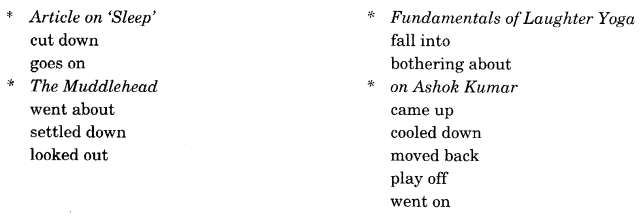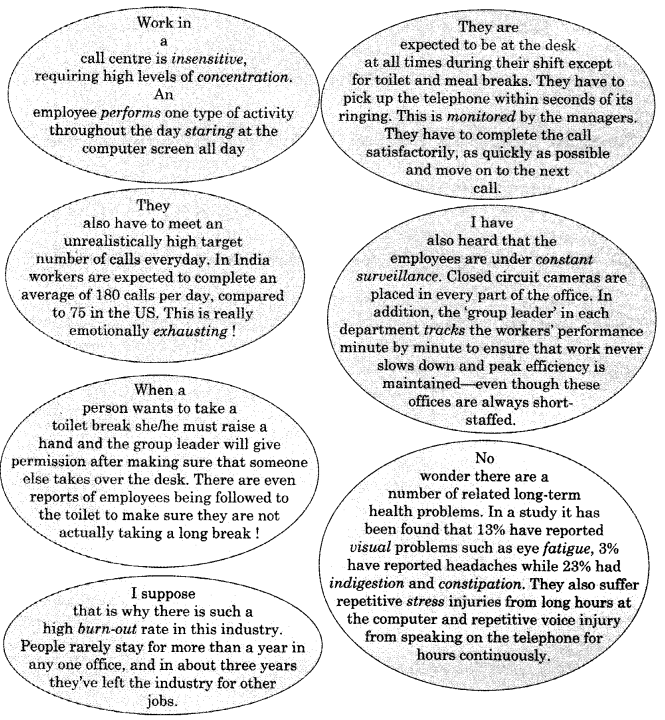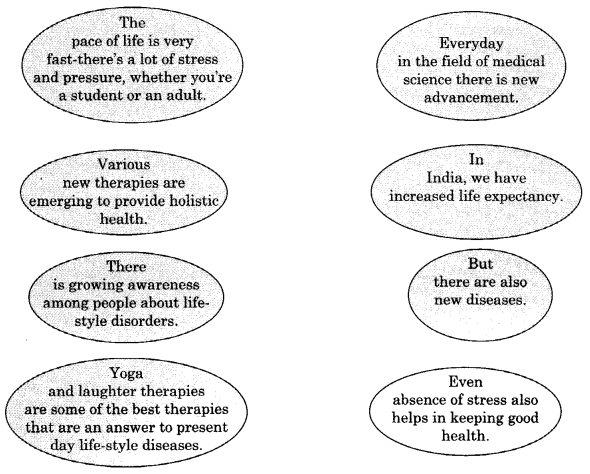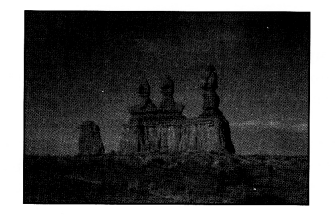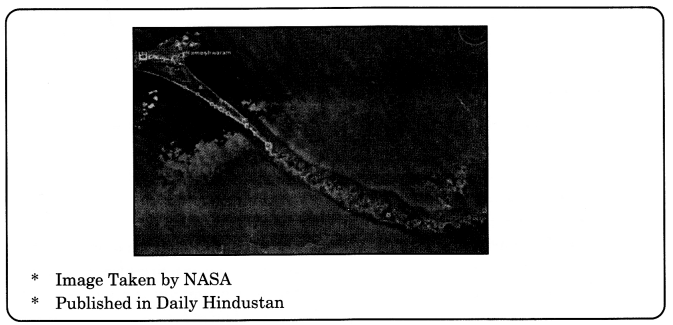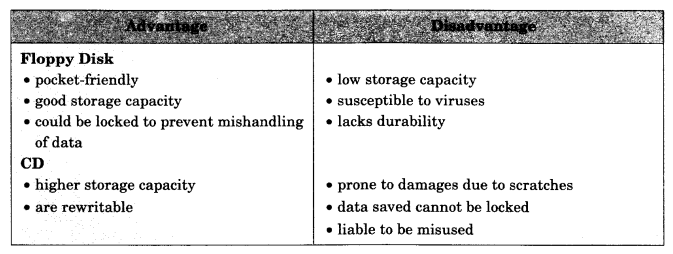NCERT Solutions for Class 10 English Main Course Book Unit 3 Chapter 3 Space Travel are part of NCERT Solutions for Class 10 English. Here we have given NCERT Solutions for Class 10 English Main Course Book Unit 3 Chapter 3 Space Travel.
| Board | CBSE |
| Textbook | NCERT |
| Class | Class 10 |
| Subject | English Main Course Book |
| Chapter | Unit 3 Chapter 3 |
| Chapter Name | Space Travel |
| Category | NCERT Solutions |
CBSE Class 10 English Main Course Book Unit 3 Science Chapter 3 Space Travel
TEXTUAL EXERCISES
Question 1.
In this section you will read about the experiences of four women astronauts in space. Your teacher will divide the class into groups of four and ask each of the group members to read about one of the astronauts. In the end each of the group members will complete the table given below by exchanging information within the group.
Answer:
For answer see Q.3.
Question 2.
Read the Article given.
Question 3.
Copy and complete the following table with information from the passage :
Answer:
Each one of the group members exchanged information about the four astronauts. The inputs were shared among group members of Group 1, Group 2, Group 3, Group 4. Their task of completing the table is given below :
| Name | Age | Year or becoming an astronaut | No. of space .Journeys | Experience with yero gravity | Ways of staying fit | Memorable
moments |
What one has learnt from the travel |
| 1. Peggy Whitson | 48 | 1996 | 2 | —Nice
—felt younger |
cardio
exercises resistance training |
Incredible
earth’s curvature |
Exploration a must |
| 2. Pamela Melroy | 47 | 1995 | 3 | Magical
zero gravity |
— | cheered by Whitson and her crew | Long term pay-off |
| 3. Sunita Williams | 43 | 1998 | 1 | hard | running | flying versus walking |
under standing oneness |
| 4. Barbara Morgan | 56 | 1985 | 1 | fun-filled | power of food | upside down position | to remain optimistic |
Question 4.
Complete the following sentences with information given in the passage above :
- Peggy Whitson has been described as a ‘walking laboratory’ because …………………….
- Peggy feels that returning to earth is not a pleasant experience as …………………….
- Pam Melroy and her crew members were applauded when …………………….
- The historic moment during Pam Melroy’s space flight was …………………….
- According to Melroy the space station is important because …………………….
- ‘Being a rookie’ means …………………….
- Sunita Williams donated her hair because …………………….
- Sunita Williams broke the record of …………………….
- Barbara had to wait for her turn to go into space because …………………….
- Morgan’s work on the space shuttle was to …………………….
Answer:
- she was sufficiently equipped for describing the long-term effects of zero gravity (zero-g).
- her agility and quick motions were severely checked.
- they came on board after they docked the aircraft with the International Space Station.
- that it was the first time two women were incharge of two spacecrafts at the same time.
- of the sheer act of sending humans into an extremely hostile environment in space.
- an untrained recruit
- she knew the trauma of cancer patients to fight the disease
- Shannon Lucid’s previous endurance of space time.
- in the tragic fall of Challenger in 1986, Morgan returned to Idaho to resume her teaching career. In August 2007, she blasted off in the shuttle for a 13-day mission as a full time astronaut.
- operate the space station’s robotic arms and teach lessons via on board video about the life on space.
Question 5.
In your groups find out about the famous Indian astronauts and their achievements. Is there any woman astronaut in India ? Report your findings to the rest of the class.
Answer:
The Groups A, B and C found out information about the famous Indian astronauts that is given below :
- Rakesh Sharma (Indian)
- Kalpana Chawla (India born, U.S.A. Citizen)
- Sunita Williams (India born, U.S.A. Citizen)
1. Rakesh Sharma
Rakesh was the first Indian and 138th person to travel in space. Sharma joined the Indian Air Force and progressed rapidly through the ranks. Sharma, then a Squadron Leader and pilot with the Indian Air Force, embarked on a historic mission in, 1984 as part of a joint space programme between the Indian Space Research Organisation and the Soviet Intercosmos space programme. He spent eight days in space aboard the Salyut 7 space station. Launched along with two Soviet cosmonauts aboard Soyuz T-ll on the 2 April 1984, was 35-year-old Sharma. During the flight, Sharma conducted multi- spectral photography of northern India in anticipation of the construction of hydroelectric power stations in the Himalayas. In a famous conversation, he was asked by the then Prime Minister Indira Gandhi how India looked from space, to which he replied, Saare Jahan Se Achcha, (a reference to an iconic Urdu poem used in India’s freedom struggle, usually referred to as ‘Saare Jahaan se achcha Hindustan hamara,’ ‘our land of Hindustan, is the best of the entire world’).
He was conferred with the honour of Hero of Soviet Union upon his return from space. The Government of India conferred its highest gallantry award (during peace time), the Ashoka Chakra on him and the other two Russian members of his mission. Sharma and his backup, Wing Commander Ravish Malhotra, also prepared an elaborate series of zero-gravity Yoga exercises which the former had practised aboard the Salyut 7. Retiring with the rank of Wing Commander, Rakesh Sharma joined Hindustan Aeronautics Limited (HAL) as a test pilot at its Nashik Division. He was later based at the National Flight Test Center (NFTC) in Bangalore and worked on the indigenous Light Combat Aircraft program, among others.
2. Kalpana Chawla
Kalpana Chawla was the first Indian woman to travel into space and also the first Indian to perish in space. She graduated from Tagore School at Karnal, India in 1976 and was conferred the Bachelor of Science degree in aeronautical engineering from Punjab Engineering College, India, 1982. She did her Master of Science Degree in aerospace engineering from University of Texas, 1984 ; and Doctorate of Philosophy in aerospace engineering from University of Colorad, 1988. Her space flight experience on STS-107 COLUMBIA was the 16-day flight that was a dedicated Science and Research Mission. But STS-107 mission ended abruptly on February 1, 2003 when space shuttle Columbia and the crew perished during entry, 16 minutes prior to scheduled landing. Daughter of India, the famous astronaut and scientist, Kalpana dedicated her whole life to scientific and astronomic research. She finally laid her life as supreme sacrifice on the path of human service during the journey of the Space Shuttle ‘COLUMBIA’. Kalpana was selected as an astronaut in 1994. She had the highest number of hours, logged in space. She was honored with several posthumous awards like Congressional Space Medal of Honor NASA Space Flight Medal, NASA Distinguished Service Medal etc.
India’s Prime Minister Manmohan Singh announced on February 5, 2003 that the meteorological series of satellites, “METSAT”, will be renamed “KALPANA”.
3. Sunita Williams
Deepak Pandya who is Sunita Williams’ father is a famous neuroanatomist. Williams’ roots on her father’s side go back to Gujarat in India. She has been to India to visit her father on April 11,2007. She surpassed the record of 188 days and 4 hours set by Shannon Lucid in 1996.
Selected by NASA in June 1998, Williams began her training in August 1998. Her Astronaut Candidate training included orientation briefings and tours, numerous scientific and technical briefings, intensive instruction in Shuttle and International Space Station systems, physiological training and ground school. It was all to prepare for T-38 flight training, as well as learning water and wilderness survival techniques.
She surpassed Kathryn Thornton, who had three spacewalks, as the woman with the most spacewalks. Peggy Whitson later surpassed her for woman with the most spacewalks. Following a period of training and evaluation, Williams worked in Moscow with the Russian Space Agency on the Russian contribution to the ISS, and with the first expedition crew sent to the ISS. Following the return on Expedition 1, Williams worked within the Robotics branch on the ISS Robotic Arm and the related Special Purpose Dexterous Manipulator. She was a crewmember on the NEEMO 2 mission, living underwater in the Aquarius habitat for nine days in May 2002.
As of 2008, Williams served as NASA’s Deputy Chief of the Astronaut Office. She was assigned as a backup crew member for Expedition 30 to the International Space Station to be flown in 2011 and was to be the Commander of Expedition 32, a six-month mission scheduled to begin in the spring of 2012.
Like many astronauts, Williams is a licensed amateur radio operator, having passed the technician class license exam in 2001. She was issued the call sign KD5PLB by the Federal Communications Commission on August 13, 2001. She used one of the two amateur radio stations aboard the ISS when she talked with school children.
In September 2007, Sunita Williams visited India. She went to the Sabarmati Ashram, the ashram set up by Mahatma Gandhi in 1915, and her ancestral village Jhulasan in Gujarat. She was awarded the Sardar Vallabhbhai Patel Vishwa Pratibha Award by the World Gujarati Society. She is the first person of Indian origin who is not an Indian citizen to be presented the award. She also visited her cousin’s home on her nephew’s birthday. On October 4, 2007.
She has the following awards and honors to her credit :
- Navy Commendation Medals (twice)
- Navy and Marine Corps Achievements Medal
- NASA Space Plight Medal
- Humanitarian Service Medal
- Sardar Vallabhbhai Patel Vishwa Pratibha Award
Question 6.
You are very impressed by the achievements of the women astronauts and decide to give a speech on how Indian girls should also make a mark in this field. Write the speech. The following points may help you make your speech interesting :
– Start with a suitable salutation (Good Morning )
– Think of an impressive introduction (a quote/a humorous story/questions, etc.)
– List out the points that appealed to you in the article
– List out the reasons why there are hardly any women in the Indian space programmes
– Think of ways in which this can be changed
– Think of an interesting conclusion
Answer:
The following inputs will help you write the speech :
 <
<
Good Morning friends
Stepping in space may not be your dream. But do you ever wonder how does it feel to be in zero gravity ? Secondly, when other women can go into space, why can’t you? You, too, can make a mark like them.
Men and women from America and Russia have been flying in space since 1961. They have proved that humans can live and work successfully in space even for months at a stretch. Inspired by them ; Peggy Whitson, Pamela Melroy, Sunita Williams, Barbara Morgan have also set new records. With her 195 days in space, Sunita broke Shannon Lucid’s previous endurance record-until Peggy Whitson broke both women’s records in 2008.
It is heartening to note that they exhibited exemplary performances while repairing broken satellites, improvising new procedures when things went wrong in space. Even Kalpana Chawla’s indomitable spirit inspires millions of aspiring astronauts. Peggy Whitson is a walking laboratory for the long-term effects of zero gravity. Indian women have made a mark all over the world as engineers, scientists and doctors. But it is amazing that Indian women are nowhere on the list of space achievers. However, many have done marvelously well in fields where men could show their might.
Space flights are expanding. But there are hardly any women in the Indian space programmes. This may be due to the prevailing unfavourable conditions like poor infrastructure, gender-biased society and cultural inhibitions. Sheer dedication, strong academic background, mental and physical fitness and, of course, practical skills do certainly help to reach the final destination.
You know it well that we live in the 21st century where mindsets are changing for the better. Therefore, do not stop just because the task is daunting. It is difficult, but not impossible. There are great names to seek inspiration from ie, Kalpana Chawla and Sunita Williams. They have made India proud with their unflagging spirit and wonderful work done. Their achievements can certainly inspire you as well.
So, young girls, gear up for the space mission. Be, pilot astronauts or astronaut researchers. It requires your grit and courage to become an astronaut. Your friends have been flying aircraft and fighter bombers. You, too, can be responsible for the crew, the integrity of the space-flight-and its mission.
International Space Station welcomes you all heartily. You must dare to reach the frontiers of space and even beyond. Best of luck to you all!
Thank you very much.
We hope the NCERT Solutions for Class 10 English Main Course Book Unit 3 Chapter 3 Space Travel help you. If you have any query regarding NCERT Solutions for Class 10 English Main Course Book Unit 3 Chapter 3 Space Travel, drop a comment below and we will get back to you at the earliest.
